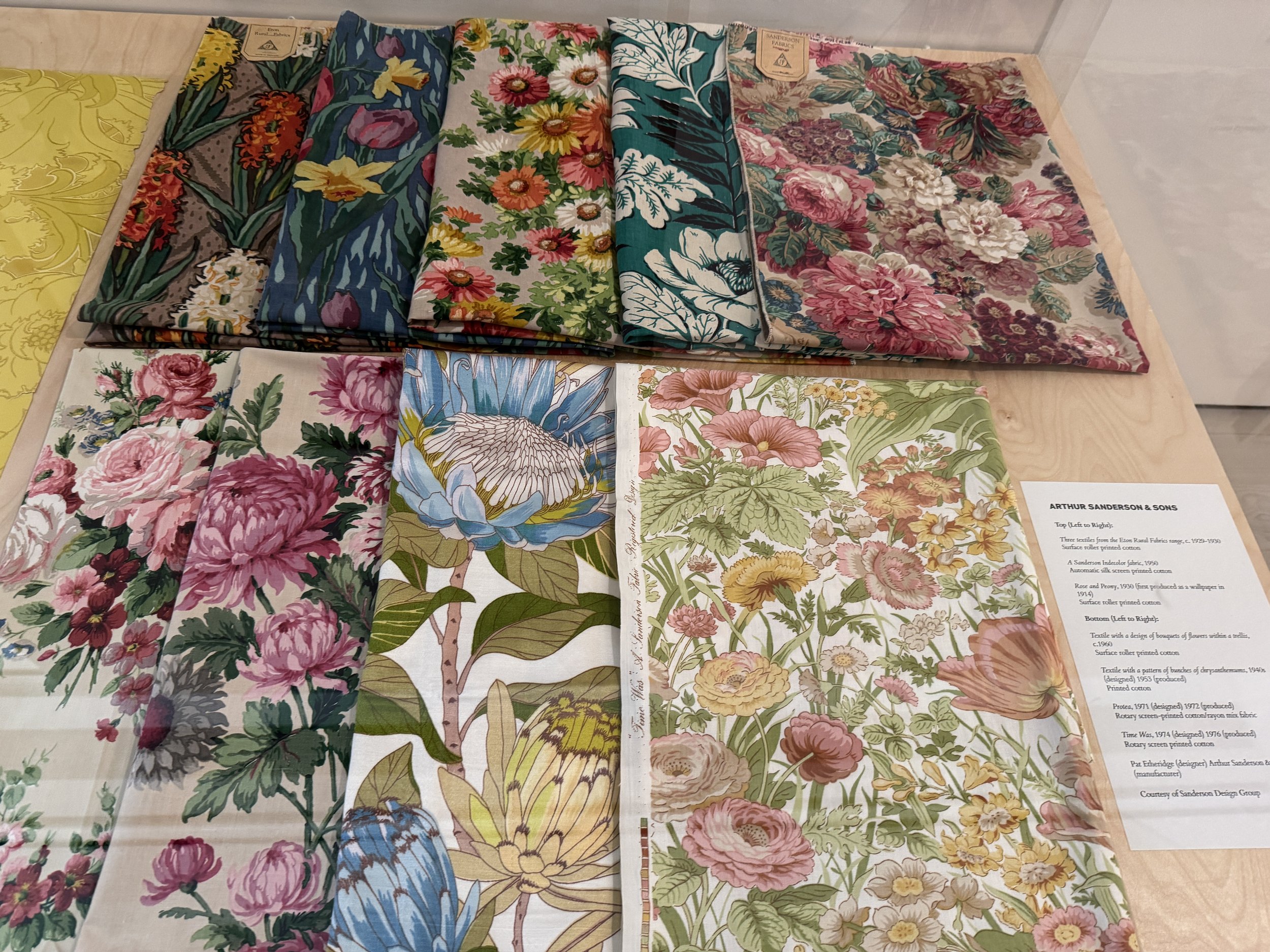As interior designers, we’re always searching for new ways to bring nature indoors — to create spaces that breathe, inspire, and spark emotion. The FLOWERS exhibition at the Saatchi Gallery absolutely blew me away with its celebration of the beauty, symbolism, and storytelling power of flowers.
This wasn’t just about pretty petals. FLOWERS is a masterclass in how botanical elements can transform spaces, connect people, and fuel creativity across art, fashion, sculpture, and even science. And let’s be honest — for us designers, it was packed full of brilliant ideas we can bring into our own projects!
Let me take you through it...
Room 1: ROOTS — Where It All Began
The journey started by looking back at how flowers have inspired artists for centuries. From Renaissance paintings full of mythology and symbolism, to the bold brushstrokes of the Impressionists like Van Gogh, flowers have always been much more than decoration — they’re powerful storytellers.
This room was a great reminder that even the oldest traditions can feel fresh if you look at them the right way.
Arthur Sanderson & Sons
Room 2: IN FULL BLOOM — Nature Without Borders
In Room 2, the exhibition shifted to a more global view, showing how contemporary artists from all over the world have been inspired by flowers. In today’s connected world, ideas travel faster than ever — and so does creativity. The works in this room were bold, energetic, and full of life, proving that no matter where we are, nature speaks a universal language.
As designers, it's a great reminder that floral inspiration doesn’t have to feel traditional or local. We can pull from global influences, mix techniques, and create spaces that feel fresh, eclectic, and truly international — just like the world we live in today.
Materiality and Innovation
Ann Carrington's silverware sculptures demonstrate how everyday materials can be transformed into extraordinary artistic statements. This approach to material transformation is particularly relevant for sustainable design practices, showing how we can repurpose existing elements to create beauty.
Martin Schoeller. Jeff Koons with Floral Headpiece, New York 2013.
Room 3: FLOWERS IN FASHION — A Timeless Romance
This gallery showed just how deep flowers run in fashion — from ancient jewelry to runway shows. Designers like Mary Quant and Vivienne Westwood didn’t just use flowers for their beauty; they made them rebellious, energetic, and full of life.
The big takeaway? Floral doesn’t have to mean soft and traditional — it can be bold, modern, and a little wild too!
Room 4: FLOWERS IN PHOTOGRAPHY AND SCULPTURE — Seeing Blooms Differently
This room had incredible photography and sculptural pieces — over 30 artists showing how flowers can be delicate, dramatic, and even a bit edgy.
It got me thinking: floral elements in design don’t always have to be literal. They can be abstract, surprising, and packed with texture.
William Darrell’s The Machinery of Enchantment.
Pedro Almodovar. Menina, 2019.
Room 5: Rebecca Louise Law’s "La Fleur Morte" — Nature Meets Architecture
Talk about jaw-dropping! Rebecca Louise Law’s La Fleur Morte filled the room with 100,000 dried flowers suspended from the ceiling. Walking through it was like stepping into another world.
There are so many lessons here for us as designers:
Using height and volume for impact
Playing with natural materials in bold ways
Mastering repetition to create drama and emotion
It made me see ceilings not as a limit, but as another canvas waiting to be explored.
Room 6: FLOWERS IN FILM, MUSIC, AND LITERATURE — Flora as Storyteller
From movie posters to album covers, flowers have been used again and again to evoke love, mystery, danger, and hope. This room showed how floral imagery crosses every creative field — and reminded me that storytelling isn’t just for books and films — our spaces should tell stories too.
Room 6: FLOWERS IN FILM, MUSIC, AND LITERATURE
Room 8: SCIENCE: LIFE OR DEATH — The Wonder of Nature
The final gallery explored how flowers link to science — botany, medicine, even mathematics. It’s a beautiful reminder that when we bring natural elements into design, we’re not just making a space look nice; we’re tapping into something ancient, important, and essential to life itself.
Wood, glass, animal bone, animal teeth, brass wire.
Future-Forward Thinking: My Favourite Fascination
One of the most exciting parts for me? William Darrell’s The Machinery of Enchantment.
He created delicate mechanical flowers that opened and moved as if they were alive. It was pure magic — a perfect blend of natural beauty and cutting-edge technology.
It made me realise how important it is to look forward. As designers, we should be thinking about how interactive, mechanical, and even digital elements can enhance our connection to nature, not replace it.
Nature and innovation can work together to create spaces that feel more alive than ever before.
Contemporary Design Takeaways
Throughout the exhibition, there were so many ideas we can bring straight into interiors today:
Wall Coverings: Bold floral wallpapers and large-scale prints that make a serious statement
Ceiling Installations: Using height, lightness, and repetition to create unforgettable overhead features
Biophilic Design: Thinking beyond potted plants — using flora creatively in furniture, textiles, and structure
Modern Florals: Reimagining botanical elements in ways that are bold, sculptural, and future-facing
A Final Thought
Next time you're stuck on a design concept, remember what FLOWERS teaches: blooms aren’t just there to look pretty — they are powerful tools for storytelling, space-making, and emotional connection.
Whether you're designing a home, a restaurant, or a hotel lobby, flowers — and the natural forms they represent — are timeless sources of inspiration. The magic lies in finding new, exciting ways to bring that inspiration to life in contemporary spaces.
Hope you are inspired by the photos!

































